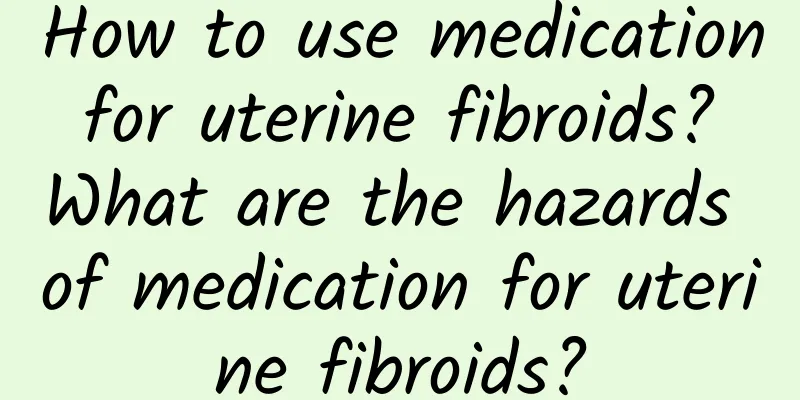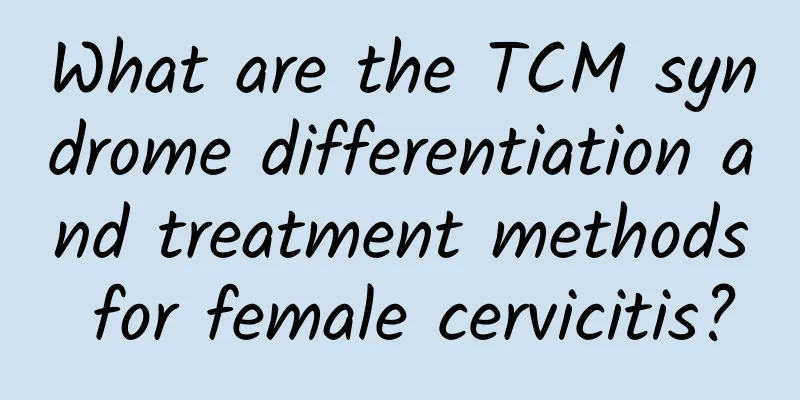How to use medication for uterine fibroids? What are the hazards of medication for uterine fibroids?

|
With the development and progress of medicine, there are many treatments for uterine fibroids, so if you have this disease, you must actively cooperate with the treatment so as not to pass the best treatment period. Let's take a look at what treatments are available. 1. Follow-up observation If the patient has no obvious symptoms, the fibroids are not large (generally the uterus does not exceed 3 months of pregnancy), and there are no symptoms of malignancy, regular follow-up observation can be performed. 2. Medication (1) Gonadotropin-releasing hormone agonist (GnRH-a) Currently, the commonly used GnRH-a in clinical practice include leuprorelin (Enanton), goserelin (Zoloft), triptorelin (Dapiga), etc. GnRH-a should not be used for a long time. It is generally used for 3-6 months to avoid causing severe menopausal symptoms caused by low estrogen; small doses of estrogen can also be supplemented to resist this side effect. (2) Mifepristone is a progesterone antagonist that has been clinically used in the treatment of uterine fibroids in recent years. It can reduce the size of fibroids, but the fibroids grow more after discontinuation of the drug. (3) Danazol is used for preoperative medication or to treat uterine fibroids that are not suitable for surgery. Uterine fibroids can grow after the drug is stopped. Taking danazol causes liver damage and androgenic side effects (weight gain, acne, deepening of the voice, etc.). (4) Tamoxifen can inhibit the growth of fibroids. However, it should be noted that some patients may experience an increase in the response of uterine fibroids, and may even induce endometriosis and endometrial cancer. (5) Commonly used androgen drugs include methyltestosterone (methyltestosterone) and testosterone propionate (testosterone propionate), which can inhibit the growth of fibroids. Pay attention to the dosage to avoid masculinization. During the bleeding period of patients with uterine fibroids, if the amount of bleeding is heavy, uterine contractants (such as oxytocin, ergot) and hemostatic drugs (such as hemostatic acid, aminobenzoic acid (hemostatic aromatic acid), lizhihemostasis, Panax notoginseng tablets, etc.) can also be used, which can play a certain degree of auxiliary hemostatic effect. 3. Surgery Surgical treatment of uterine fibroids includes myomectomy and hysterectomy, which can be performed abdominally, vaginally, or endoscopically (hysteroscopy or laparoscopy). The choice of surgery and surgical method depends on factors such as the patient's age, fertility requirements, size of the fibroid, location of growth, and medical technology conditions. (1) Myomectomy is a surgery to remove uterine fibroids and preserve the uterus. It is mainly used for young women under 40 who wish to retain their fertility. It is suitable for fibroids; menorrhagia; compression symptoms; fibroids causing infertility; submucosal fibroids; fibroids that grow rapidly but do not become malignant. (2) Hysterectomy Hysterectomy > 2.5 months of pregnancy, obvious symptoms, the possibility of malignant changes in fibroids, and no fertility requirements are suitable for hysterectomy. Hysterectomy can be done by total hysterectomy or subtotal hysterectomy. The elderly, especially those with severe cervical hypertrophy, cracks or erosion, are suitable for total hysterectomy. The possibility of cervical malignancy must be eliminated before surgery. 3. Uterine artery embolization The arterial catheter is directly inserted into the uterine artery, and permanent embolic particles are injected to block the blood supply to the uterine fibroids, causing the fibroids to shrink or even disappear. UAE is currently mainly suitable for uterine fibroids with symptoms such as anemia caused by abnormal uterine bleeding. When choosing interventional treatment for uterine fibroids, caution should be exercised, especially for patients with uncontrolled pelvic inflammation, those who wish to retain fertility, arteriosclerosis, and contraindications to angiography. |
<<: How to treat uterine fibroids? When can uterine fibroids be cured?
Recommend
What medicine should I take if my period is delayed?
What medicine should I take if my period is delay...
Is it OK to get pregnant with cervical precancerous lesions?
The cervix is a very important organ for women....
Early symptoms of cervicitis
Experts from our hospital said that early detecti...
Will eating too much oatmeal lead to weight gain?
Oats are a popular health food and are considered...
Aerobic exercise + resistance exercise is more effective in reducing fat
[Key Points]: According to the results of a Brazi...
Treatment of irregular menstruation in urban working women
With the progress of society, more and more urban...
Enjoy a "thin" Mother's Day! Mother and son lost 59 kg to find health
Mother's Day is approaching and many mothers ...
What are the hazards of threatened abortion that cannot be ignored?
Female friends should know the dangers of threate...
How to prevent recurrence of ectopic pregnancy
According to statistics, 10%-15% of women who hav...
Office workers get rid of abdominal obesity and overwork obesity! Chinese medicine practitioner Wu Mingzhu: Taking a walk after meals and lifting your feet more often will not hurt your spleen
Office workers often suffer from various health p...
Here is a detailed introduction to the precautions for abortion
Women should pay attention. There are many precau...
What is the cause of the itchy vulva and small spots? What should I do?
Small spots of vulvar itching may be caused by vu...
Toast syndrome hides 3 major health risks! Nutritionist: Chinese herbal medicine is mild and nourishing, and can enhance physical strength
A new term for the Z generation workplace phenome...
Can adenomyosis become malignant?
Adenomyosis has become a common gynecological dis...
How much does it cost to check for congenital absence of vagina?
How much does it cost to check for congenital abs...









